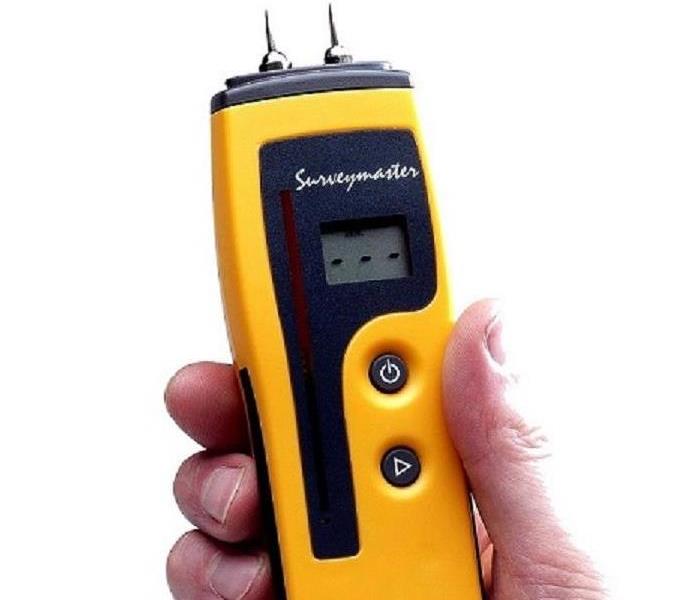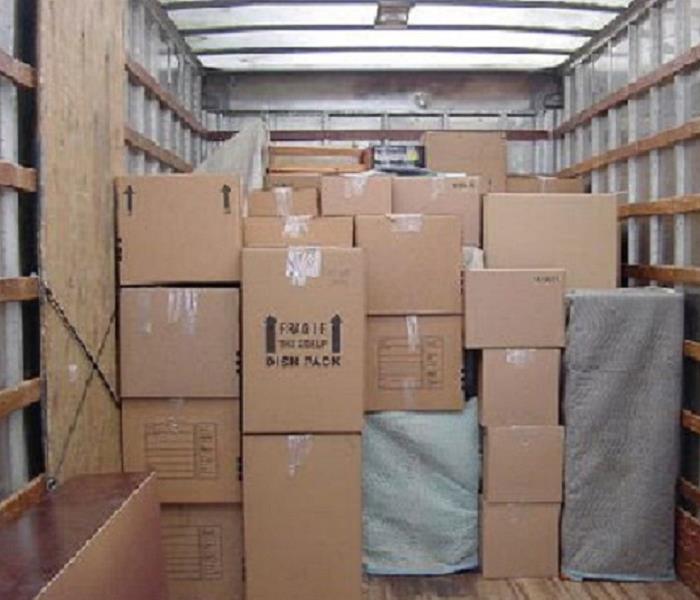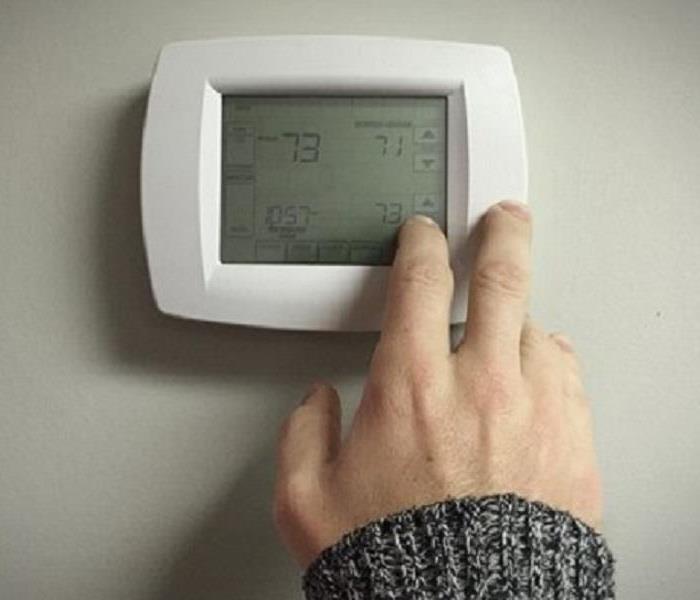Recent General Posts
Are Lead Contaminates in Your Home?
10/1/2018 (Permalink)
Lead is scary word for allot of people, much like Mold has become. But like Mold, Lead is everywhere. So how do we keep ourselves free from harm?
What Is Lead?
According to EPA, Lead is a naturally occurring element. While it has some beneficial uses, it can be toxic to humans and animals causing of health effects.
Its Uses:
Lead has been found in a variety of products found in and around our homes, most notably is Paint. Lead in paint has many benefits. It drys faster, shines better, blocks sound & radiation, and prevents the growth of mildew. Along with paint, ceramics, plumbing materials, solders, gasoline, batteries, ammunition, cosmetics, and toys have been found to contain lead.
When Lead Becomes Toxic:
Lead enters the body through inhalation or consumption, those are the only ways. Lead becomes toxic when disrupted.
Ex. Lead paint in a home is not harmful, unless the paint is peeling or chipping. If the paint is disrupted, lead dust can spread in the air and into your lungs. Children may be tempted to eat paint chips or rub their hands on the walls where disrupted lead paint is present. This presents a serious health hazard to the child.
Both Adults and Children absorb lead at different rates. After the limit is reached, effects may be more harmful.
Identify Effects of Lead:
Lead attacks almost every part of your body, making you feel sick. It can also do damage to your brain, lower your IQ, cause stomach problems, hearing problems, birth/pregnancy defects, and kidney failure.
Lead effects can also be unnoticeable too. A BLL (Blood Lead Level) test will give an approximation of how much lead is in your blood.
Lead in Your Home:
Yes lead is probably in your home now, whether in the form of paint or household products.
Visit the EPA & CPSC websites for more information on Lead and certain items that can affect you and your family.
SERVPRO® Technology: Moisture Meters
6/6/2017 (Permalink)
 These Moisture Meters are considered Penetrating Meters due to the probing pins.
These Moisture Meters are considered Penetrating Meters due to the probing pins.
What Are Moisture Meters: Moisture Meters are relatively the same size as Thermo Hygrometers. These meters have pins for tapping and locating moisture on walls and ceilings.
Why Are They Important: These moisture levels that the meter taps allow our technicians to know exactly where water is hiding in your walls. This allows them to treat damaged areas and not compromise any undamaged section.
This meter is used each time a home is monitored. It allows us to know the section is drying properly and quickly.
Can You Smell that Smell?
12/5/2016 (Permalink)
It's that time of year, the time when you turn on your heater. It doesn't happen too often, in fact hardly ever some years. When you do, though, it's for good reason. But have you ever noticed a funny smell when you turn your heater on?
If you have, you're not the only one. In fact, it's quite common. But you still shouldn't ignore it. Depending on the type of smell, there might be a fairly easy solution or a real situation. So what does your heater smell like?
Does it smell Damp or Dusty?
That's normal. Dust and dirt will collect in the ducts over time. When the heat kicks in, the dust can release a smell when it gets blown about the house. If the smell lingers after multiple uses a new filter may be needed.
Does it smell like Oil or Smoke?
This can be of serious concern. Oil may be leaking, that is if you have an oil furnace. Such a leak may put you at risk for fire damage.
Does it Smell Musty?
A musty smell could signify Mold, either in the unit or filter itself. Inspect, Clean, and Replace as needed to protect your home from Mold.
Does it Smell like Burning Plastic or Electrical?
An object may be in the duct that is overheating and causing the smell. It could entail something much more serious like the units motor overheating. Contact an experienced technician to inspect the electrical of your unit to insure it's working properly.
Next time you smell that "funny" smell, don't ignore it.
6 Tips to Survive the Summer Heat
5/6/2016 (Permalink)
Summer...the kids love it. It's a time for pool parties, BBQ's, beach day's, and just relaxing. But summer days can be grueling. The heat can be unbearable. No matter how much water you drink or how much ice cream you eat, you just can't seem to cool down.
Whether you have A/C or not, these tips can help you stay comfortable this summer.
Close Blinds/Curtains: Don't let the heat in. Give your home some shade by keeping the blinds or curtains closed.
Fans: Regular oscillating fans are life savers. Open a window and place the rear of the fan towards the window. Doing so will push hot air out.
Ceiling Fans: Ceiling fans only circulate air, giving the impression that it's cooler then it really is. Set the fan to counter-clockwise mode will pull up all the hot air, so it's not lingering around you.
Bed Sheets: Throw your sheets in the freezer! It's the opposite of an Electric Blanket. But works wonders on those sleepless nights when the summer heat is keeping you up.
Limit Oven Use: Using the oven can heat up the kitchen and sometimes the entire house. Limiting your oven use can lower the temperatures in you house.
When all else fails, turn on the A/C. If you don't have A/C, using these tips can lower temperatures in your house. However, running the A/C all summer long can skyrocket your bill. These tips can limit your use of the A/C and keep you and your family comfortable this summer.
Are You Ready For Moving Day?
3/4/2016 (Permalink)
Tasks go much smoother when you have the proper tools. Moving is no different. A day of what would be full of stress and exhaustion can turn into a process of ease. Having the proper tools contributes to that ease. Here's a few Absolute Essentials that will help make your moving day easier.
The Essentials:
- Boxes - This ones a no brainer, having plenty of boxes is a must. A variety of sizes is important too.
- Tape - You can never have enough tape. You'll mostly use Packing Tape. It's good to have Duct Tape too, you never know what you'll run into.
- Markers - It's always good to be organized and markers will help you do just that. Mark the boxes that correspond to a certain room and label them with any other information you may need.
- Packing Paper/Bubble Wrap - Nobody wants their dishes or other fragile items broken during the move. Having plenty of newspaper or bubble wrap can prevent such a disaster.
Those are the Absolute Essentials, the things you need to accomplish your move. But these next things can really impact the ease of it. This list is subjective to you and your move.
- Dolly
- Gloves
- Scissors/Blades
- Toolbox
- Bungee Cords/Straps
- Blankets, Towels, Tarps
- Food & Water
If you have allot of boxes and fewer people, a Dolly would be great to have. Not only would it take the load off your helpers, but it would also cut down on time. If you have more furniture then boxes, a Furniture Dolly may suit you better then an upright one.
Gloves may come in handy if you need a little extra grip. Scissors/Blades can be of use when dealing with difficult tape. A Toolbox would prove useful too when certain furniture needs taken apart or doors need to come off.
If your transporting the items yourself, Bungee Cords & Straps are recommended. A supply of old Blankets, Towels, or Traps can provide protection for your furniture as well.
Last but not least, having enough Food & Water. All this work is going to get you and your helpers hungry & thirsty. Have enough nourishment to get you through the move.
Let's face it, Moving is tough, but it doesn't have to be. These tips can help you be prepared and enjoy the move into your new place with ease.
What Happens After El Niño?
2/29/2016 (Permalink)
"El Niño, El Niño, El Niño," it's all you have heard this past year. Your friends talk about it, your family, your co-workers, but the opinion always differs. Our last article about the topic helped explain what El Niño really is & cleared up some misconceptions. Now we'll see what the future has in store for El Niño.
Pre/During - El Niño:
El Niño has been at it since late November to early December. Locally, we've seen some rain, not as much as anticipated, but it definitely came. Other areas saw changes too. For instance, the weather in New York was tame this December. By tame, I mean while it was raining here, it was nice and sunny over there. The Northern States such as Washington & Oregon also saw a drier Winter.
Then there's the Drought. El Niño did help improve its conditions. The reality though is that this drought has been years in the making. One El Niño season isn't going to rid it. But we'll take all the help we can get.
Post - El Niño:
As El Niño storms are fading and walking out the door, La Niña is stepping in...supposedly. Why supposedly? Because it's not for certain, but it is typical. Past El Niño's were typcially followed by a La Niña. If & when La Niña does show, the forecasts will likely be on the drier side. But the real severity depends on what season it arrives.
Stay up to date with our Twitter & Facebook for more information regarding El Niño & La Niña. If your home or office has been effected by recent weather, feel free to contact us at SERVPRO® of Downey. (562) 392-3007
How Your HVAC System is Affecting Your Health
2/1/2016 (Permalink)
You no doubt cherish your HVAC system. You may use it everyday, especially the AC in the Summer and Heat in the Winter. But your HVAC System is affecting your health.
What You Need to Do:
Change your Air Filters. Air Filters keeps your air clean from Bacteria, Dust, Pollutants, Pet Dander, & Mold. A clogged Filter cannot combat against such things. It also puts strain on your energy bill and HVAC system. A clean Filter ensures your HVAC system operates efficiently.
When to Change Them:
Every 3 Months is typical. Yet, Pets, Children, & Allergies are all variables that may shorten that time to Once a Month.
How to Do It:
Your Air Filters are usually located:
- On Your HVAC System
- Your Ceilings
- Your Walls
Check these areas for Return Vents, these are where your Filters will be. Before removing Filters, make sure your HVAC system is OFF. Then, proceed to remove the Filters.
Take note of their Sizes, they're written on the side of the Filter. Pick up your new Filters at a Hardware Store or store that carries home supplies.
Proceed to install new Filters. Directional arrows on the Filter will help you to install it correctly.
(SERVPRO TIP: Mark the date you installed the Filters to help you remember when to change them out next.)






 24/7 Emergency Service
24/7 Emergency Service


